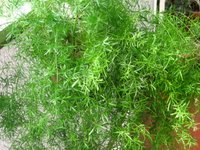You may already have seen that Carol of May Dreams Garden (see the link in the sidebar) has proposed organising a book club for the winter months. The idea is that people should suggest books they’ve enjoyed which other people could read and then comment on.  I immediately sat down to write a list – and found I couldn’t. For obvious reasons, Carol’s two criteria are that the books should be still in print and written in English – and most of mine aren’t. If I say that one of the books I refer to most was written in 1969 by Percy Thrower
I immediately sat down to write a list – and found I couldn’t. For obvious reasons, Carol’s two criteria are that the books should be still in print and written in English – and most of mine aren’t. If I say that one of the books I refer to most was written in 1969 by Percy Thrower , you’ll get the general idea (no, I wasn’t gardening then – I inherited it. But that’s for another post). The wonderful thing about gardening books is that they don't go out of date - the new ones may describe new varieties and have new ideas, but the old ideas are still the basic ones. The only thing about Percy that drives me mad is that he clearly believes he's writing for a male audience. A woman is simply the nuisance in the house who demands that certain plants are grown to provide cut flowers. But I'll forgive him. (And don't you love the shirt and tie for cutting the lawn?)
Back to the book club. As I couldn't recommend anything off my shelves, I decided to write a wish list instead, and spent half an hour surfing Guardian Unlimited’s gardening book section. I ended up with a list far too long to post, but I’ve whittled it down and you’ll find it below. I have no idea if these books are really good or not, but they look interesting and I wouldn’t say no to finding them under the tree on Christmas morning (just in case my husband happens to be reading this) :
Michael Pollan - The Botany of Desire: A Plant's-eye View of the World, Bloomsbury Publishing
Christoper Lloyd and Graham Rice - Garden Flowers from Seed, Penguin (UK) Timber Press (USA)
Alan Titchmarsh – Alan Titchmarsh, the Gardener's Year, BBC Books (or anything else by Alan Titchmarsh, come to that).
Charles Chesshire- Japanese Gardening, Aquamarine
Steven B Carroll - Ecology for Gardeners, Timber Press - this is available for limited preview on Google.
Quite a lot of people have already submitted lists, and all the titles look interesting. I'm looking forward to seeing which ones are chosen. When are we going to start, Carol?

















